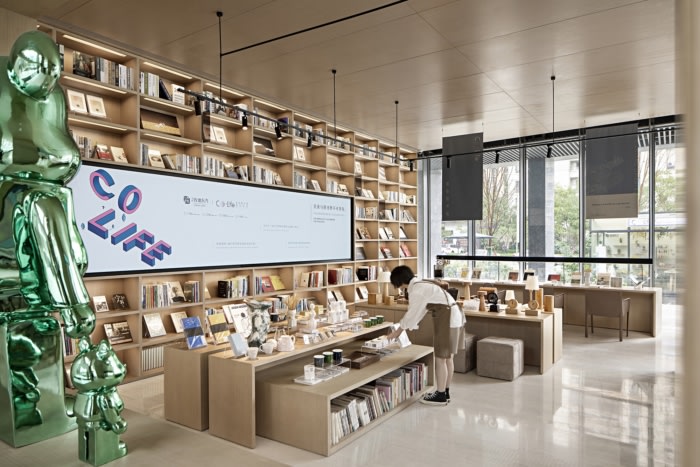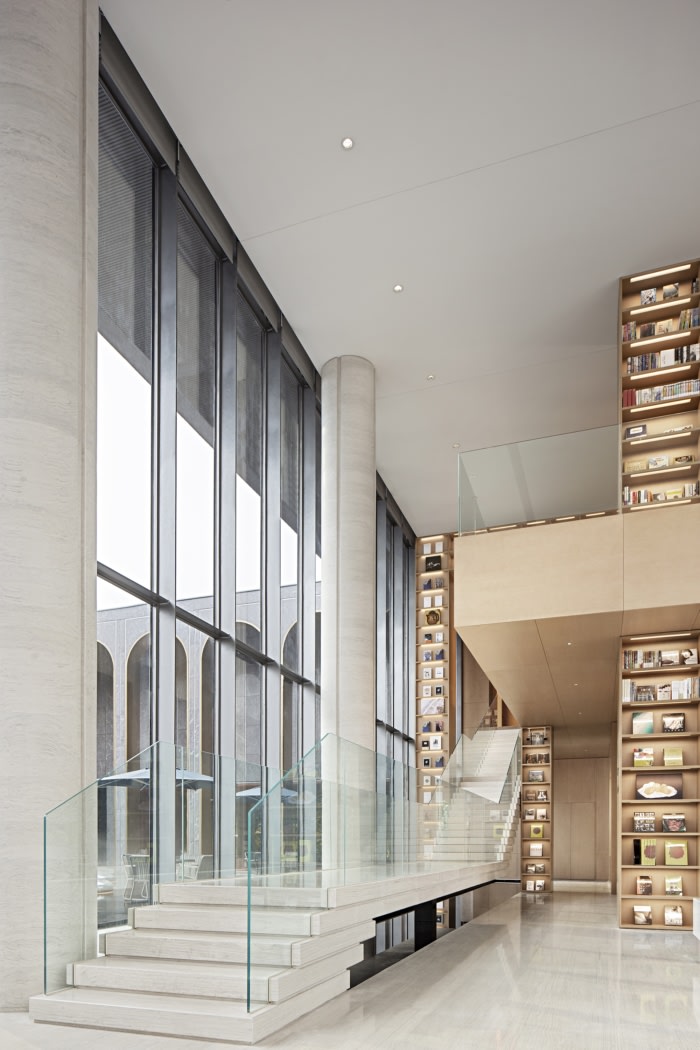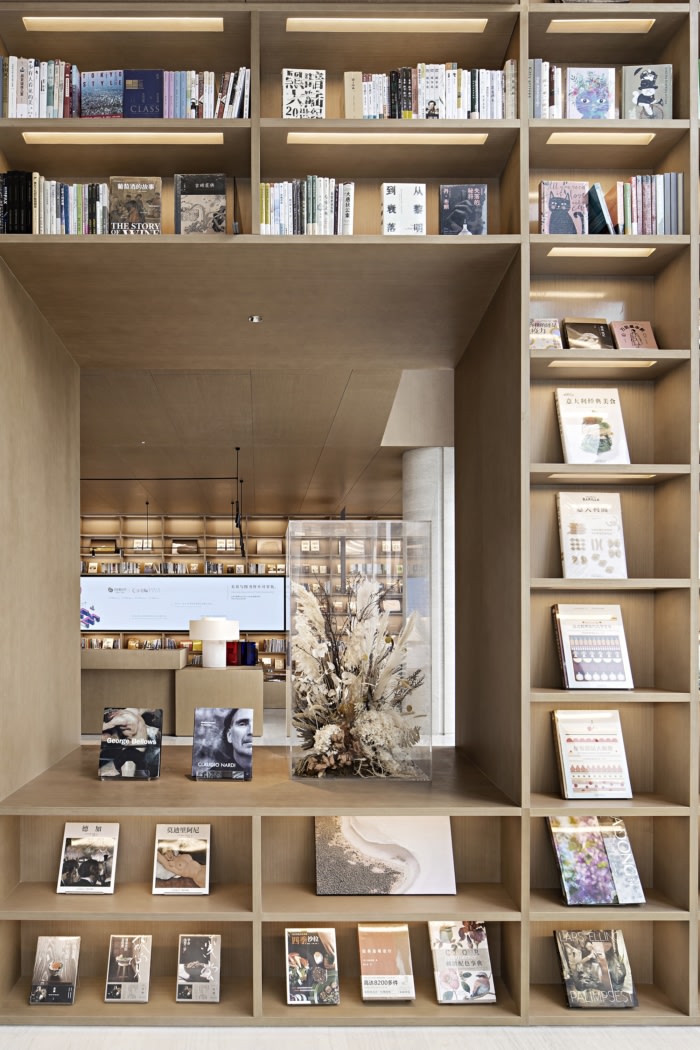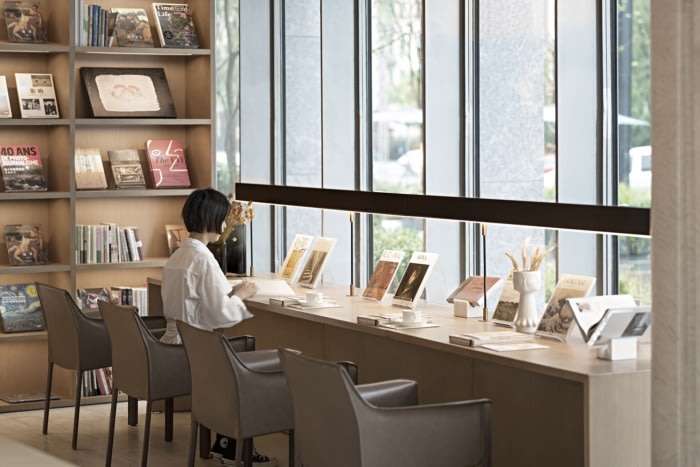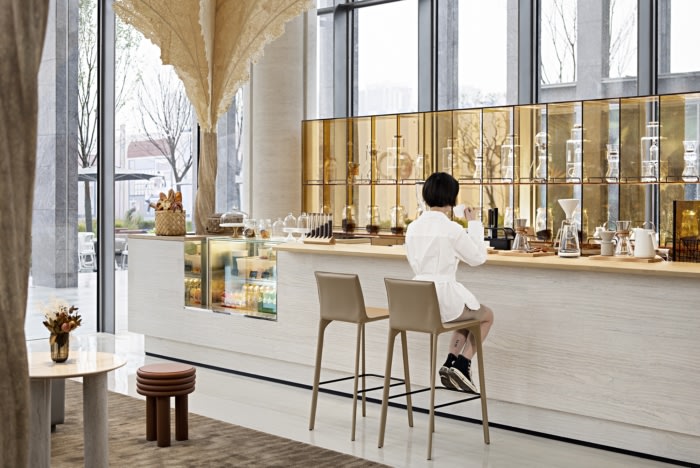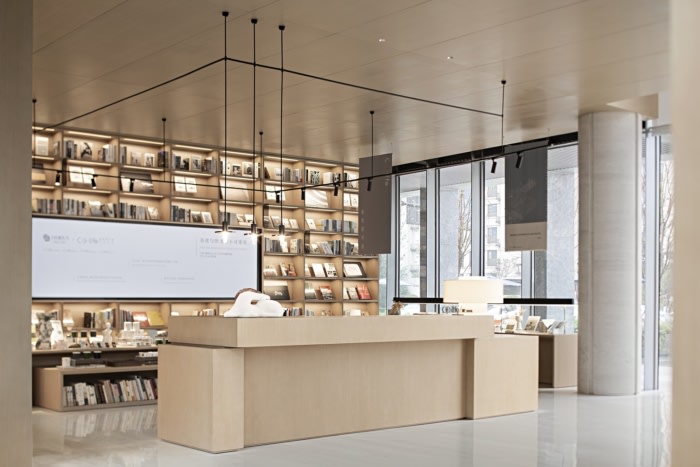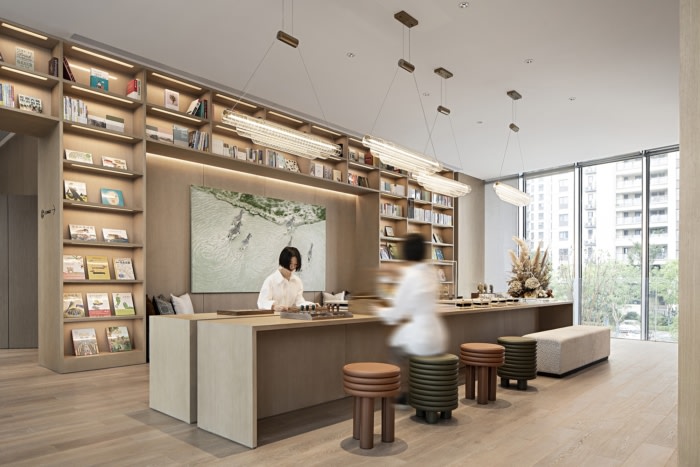Hangzhou Vanke Qiantang Oriental CO-Life Experience Center
ONE-CU Interior Design Lab completed the Hangzhou Vanke Qiantang Oriental CO-Life Experience Center with both separate areas and unity between them.
The internet has been driving the rapid evolution of consumption scenes and updating our perception of ideal life.
As a kind of consumption space, conventional property sales centers can no longer satisfy the demands of consumers. Updating services and experiences to make sales center look less like “sales centers” has become a trend recently.
Different from conventional sales center which is only targeted at property buyers and serves selling activities, new sales center embraces both buyers and non-buyers and functions as a public community space. It conveys brand identity, highlights living experience, and interacts with users to gain feedback to figure out new ideas for community space operation.
However, how to let sales centers better serve people, provide more possibilities for socializing and create a sense of belonging within the community?
Based on the question, ONE-CU Interior Design Lab conceived a novel sales center for the residential development Vanke · Qiantang Oriental in Hangzhou, China. Taking into consideration the developer’s user-centric and community-centered operation concept, as well as users’ differentiated demands, the design team worked out an experiential model that integrates scenes based on four different themes: coffee, books, food and art creation. The project sets an innovative example for urban community space and operation, and realizes the upgrade from scenes to a venue.
As a public and commercial space, contemporary sales center needs to showcase unique character, and more importantly, to provide future users with a spiritual venue that blends into the surrounding environment and atmosphere.
Based on analysis of user behaviors under the model and the demands of community construction, ONE-CU team incorporated multiple scenes into the space, explored the interfaces between spatial scenes, and identified the design strategies: integrating community scenes, stimulating interaction and upgrading scenes into a venue.
Scenes are functional existence, which provides experience and produces stories, while venue is a medium that is based on integration of functionality and behaviors and is capable of evoking emotions as well as close interaction among time, space, people and objects.
In addition to creating scenes in this public community space, it’s more important to combine scenes to build emotional connection via design approaches, so as to strengthen the feeling and the sense of belonging of different user groups, hence forming a genuine “venue”.
The building is the “entrance” that leads to this “venue”. Large French windows reveal the interior space and make it look like a street-facing store. The design team brought in several large and tall tree art installations, to create visual highlights and attract people to enter the space. Books are displayed in a way similar to that of bookstores, which can be seen through glass windows and invite passers-by to step in.
Tree art installations help bring people and space closer, eliminate the sense of uncertainty in the lofty space, and enhance the reading atmosphere with swaying shadows.
Based on in-depth investigation of the site and user groups, the designers decided to create four major scenes themed on food, coffee, books and artistic creation, and at the same time added basic functional areas for display, negotiation and signing contract.
To closely integrate different scenes in one “venue”, the design team has to work out a reasonable functional layout and circulation route, deal with relations of interfaces between functional areas, and ensure the openness of space to enable continuation or shift of functions in the future if necessary.
Design: ONE-CU Interior Design Lab
Photography: INTERPRETATION SUBLIMATION



